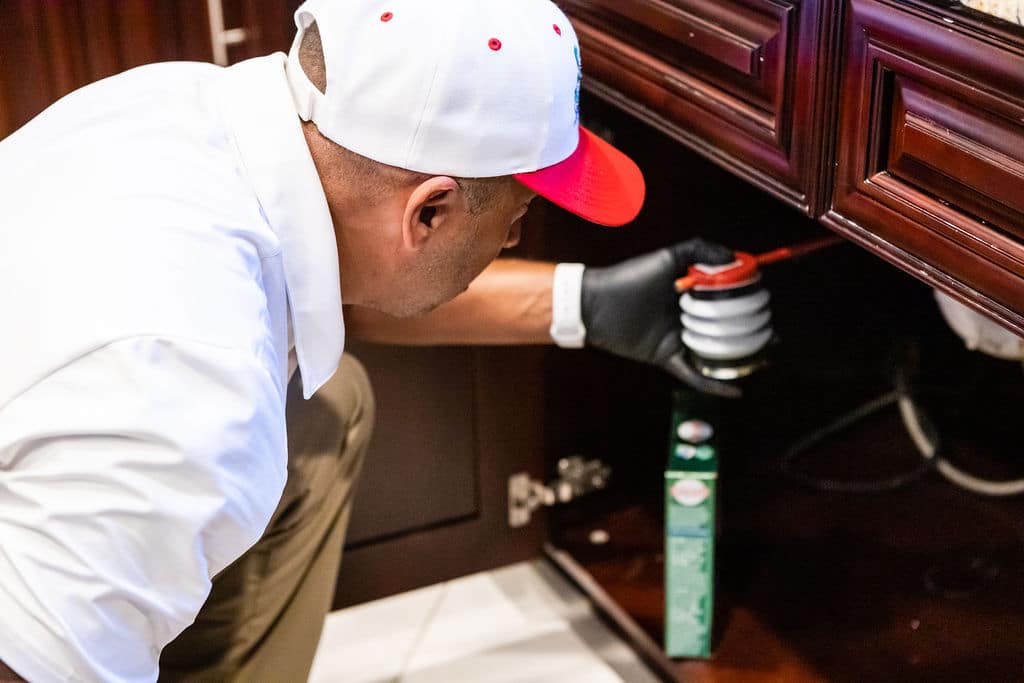Bad news and unpleasant things often travel in pairs. Does this apply to mold and bugs? Often when your home has mold, you will find yourself dealing with a lot of bugs at the same time. Is there a connection between mold and bugs or is this simply a coincidence?
It is not a coincidence; there is a well-established link between mold and bugs. The presence of mold in your home will predispose it to invasion by insects. But apart from this, there may also be something about your home that is creating the problem.
How is that possible?
The Same Conditions Attract Mold and Bugs
Mold needs a certain kind of environment to grow. In order for mold to take hold and thrive in any part of your home, the following conditions must be met:
- Excessive moisture: Mold will grow in places that are perpetually wet, maybe due to a leaky pipe, water getting beneath tiles, under-sink areas that are wet, or flood in the basement or crawlspace.
- High humidity: If the moisture content in the air is high and there is poor ventilation in the area, mold will be encouraged to grow.
- Moderate to warm temperatures: In order to grow, mold needs temperatures within the range that is comfortable for humans; between 40 and 100 degrees Fahrenheit.
- A food source: Any organic material like wood, fabric, leather, drywall, cement, and almost every building material can serve as food for mold.
The conditions needed for mold growth often converge in the dark corners of the home, which is why mold is commonly found in places that don’t get direct sunlight and have poor ventilation, such as, closets, attics, basements, and behind walls.
Incidentally, these same conditions are perfect for the survival and multiplication of cockroaches, termites, centipedes, and crickets. If any part of your home can support mold, it will also be conducive to populations of different types of bugs.
Mold and Bugs Feed on the Same Things
Some of the organic materials that mold feeds on serve as food for bugs. Mold and insects will feed on any kind of decomposing matter. As a rule, insects prefer organic materials – wood, drywall, or paper – if they are wet and decaying. Mold accelerates the decay of such materials
Some bugs, such as cockroaches have a more direct relationship with mold. Roaches and mold both feed on paper, but cockroaches prefer paper that has been broken down by mold because it is easier for them to digest. This is why roaches are often found on moldy paper.
Some Bugs Feed on Mold
Mold mites, booklice, and fungus gnats feed on mold. Mold mites are a cousin of dust mites and are just as destructive as mold. In spite of their name, booklice are not only found in books. They may be found in any place where mold grows because they live off the mold.
Some insects are also attracted to mold because they have a mutually beneficial relationship. Termites will follow the musty smell of mold to find their food. Mold breaks down wood and termites bore into the half-digested wood, allowing the mold to go even further into the wood.
How to Get Rid of Mold and Bugs
If your home has become a playground for mold and bugs, what can you do to get rid of this twin evil?
Remove the Conditions that Attract Mold and Pests
By simply reversing the conditions that draw mold and bugs to your home, you have half-solved the problem. This means:
- Fixing all issues with the plumbing that is letting water intrude into parts of the home.
- Dealing with drainage problems that make it possible for water to collect at the base of the house and get into the basement or crawlspace.
- Drying out and aerating those parts of the home with high humidity and poor ventilation.
- Storing books in places where they are not exposed to moisture in order to keep them from becoming food for mold and insects.
- Making sure clothes and similar items are completely dried before they are put into storage.
Essentially, any solution that removes the root cause of mold invasion, excessive moisture, will impede the growth of mold and bugs.
Professional Pest Extermination and Mold Remediation
Removing excessive moisture will stop mold growth but it won’t remove mold that is embedded inside the materials in your home. Mold can still be present in a home without any visible sign of it. That’s because the fungus buries itself in the materials it has been feeding on.
Removing excessive moisture from your home also doesn’t kill bugs immediately. Once insects have found their way into your home, they are terribly hard to remove. That is because these hardy creatures can slow their metabolism to survive without nourishment.
The best solutions for dealing with mold and bugs must address the root cause of the problem, while also removing the organisms from your home. Mold removal and bug extermination experts will remove embedded mold and also kill any insects that linger in your home.
If you start noticing these signs of a mold and pest infestation, call the professionals at Gregory’s Pest Control. Our friendly staff and expert technicians will work with you on a customized plan to get rid of the pests. The treatment plan may involve sanitation efforts, exclusion techniques, and various treatment methods. You can feel confident knowing that we will take care of your home and family.

Paul Gregory
Owner/President of Gregory’s Pest Control
I’m a 2nd generation pest control owner who started working for my father in 1999. I was raised in South Florida and feel blessed to call it home for my entire adult life. As a long-term Florida resident, I recognize the challenges of controlling the many different pests that thrive in our subtropical climate. In particular, I understand how difficult it can be to prevent pests from invading our homes and businesses. By helping families solve their pest problems so they can live safer, more comfortable lives, I feel I am also meeting my family’s commitment to help our community. When I’m not out fighting pests, you can find me on the golf course or out on a soccer field where I have been fortunate enough to coach soccer to kids of all ages for the past 20 years.





